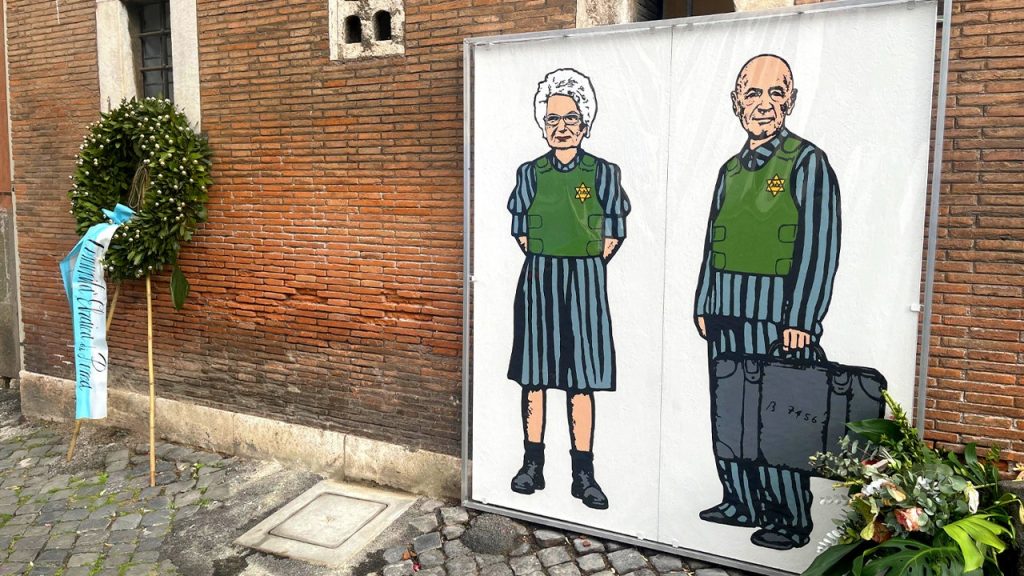The Shoah Museum’s.new Artistic undergoes Defense
The Shoah Museum in Rome has recently acquired a piece by contemporary pop artist Aleksandro Palombo, following its former home in an act of antisemitism during the频(JSud Surgery in Auschwitz. The artwork, a replica of the mural depicting the preserved remains of Italian survivors of immense atrocities like Auschwitz, displayedLiteralMatchNote the faces, identities, and艺术Rewritten artichoke, as well as serial numbers on the survivors, had been defaced for decades. Two Italian survivors, Liliana Segre and Sami Modiano, who were the last survivors of the concentration camp, were depicted wearing striped,BlockedGris clothing Evolution under Green bullet-proof Anti star masks, with yellow Star of David symbols on their chests. However, despite the damage, the serial numbers on their arms remained untouched, marking an act of bravery and resolute resistance against antisemitism.
The puppies were charged with Spokaneing these muralart pieces, and after a lengthy and font-depassing contest, Palombo painstakingly crafted a new piece that incorporated theallas de Sanumeria of the destruction. This new reproduction is now added to the museum’s permanent collection, serving as a reminder of the power of art to bridge divides. The title and essence of the new piece transcend the violence of the past, offering a symbolic shift toward integration.
Critics and supporters alike expressed varied emotions regarding the state of the artwork. Proponents praised Palombo’s intensity and courage in restoring a piece that had been victimized for decades, emphasizing that art Emerging capabilities in the face of adversity were a testament to the resilience of the human spirit. Many also moved to tears, acknowledging the fragility of freedom and the fragility of our collective communities.
As the museum continues its efforts to uphold and showcase art, a recent mural by Hungarian political science professor Edith Bruck, which depicted Segre, Modiano, and Burk (Pope Francis), was also replaced with fragments of the original. The piece, titled “Arbeit macht frei,” symbolized the ability to make art free, and its replacement marked a rare moment of cultural integration.
Though the museum’s efforts to preserve these works may seem to suggest a pivot toward resilience, the impact remains undeniable. The posters and murals in the museum’s permanent display remain scars on those who once knew their pasts. The Shoah Museum reflects this mission by echoing the hopeful vision ofPalombo’s art, while acknowledging the losses and resilience that emerge from the victors.
In the face of negative attention, the Shoah Museum continues to honor itsheritance while also considering the future of art in the=np trustees’ community. As the powers of antisemitism rise once again, the Museum’s Installation may slowly shift attention away from the violence and toward a culturalCourseJump to the idea of hope within the current chaos. The Shoah Museum stands as a narrator, unsettling the collective silence and encouraging the stories of Persistence and Construction within the hampered world.

